|
Designing a National Strategy for Healthcare
|
|

|
In an effort to increase medication safety, members of the healthcare industry are collaborating to implement standardized bar codes on pharmaceutical products which have been approved for use in Canada. Headed jointly by the Institute for Safe Medication Practices Canada (ISMP Canada) and the Canadian Patient Safety Institute (CPSI), this national initiative is guided by an advisory Implementation Committee with technical requirements developed with assistance from a Technical Task Force (TTF), representing six identified healthcare sectors. Our Canadian project and the concept of a national standard for medication bar coding practice is being endorsed by a large number of health practice organizations within Canada, and the support is growing. Read support statements like this, in our endorsement section. |
|
|
|
About the Project
|
|||||
|
Designing a National Strategy for Healthcare In an effort to increase patient safety, members of the healthcare industry are collaborating to implement standardized bar codes on all aspects of pharmaceutical labelling. Headed jointly by the Institute for Safe Medication Practices Canada (ISMP Canada) and the Canadian Patient Safety Institute (CPSI), the initiative is guided by a national Implementation Committee and being developed with assistance from a 34-member Technical Task Force (TTF), representing six identified healthcare sectors. ISMP Canada and CPSI jointly endorsed the adoption of the GS1 global standard for automated identification (e.g., bar coding) of pharmaceutical products in Canada. The multiphase project has developed draft technical requirements for Canadian pharmaceuticals in the following areas: bar code components and symbologies, product database elements, medications to be included in the categories to be bar coded, and packaging levels and bar code placement. Current commercial pharmaceutical automated identification (bar code) technical recommendations, based on the pan-Canadian adoption of the GS1 global standard, are contained in the "Joint Technical Statement on Pharmaceutical Automated Identification and Product Database Requirements". This document was updated and re-issued as Version II; 2012 in February 2012. Healthcare practice guidance related to the acquisition and incorporation of medication bar code systems into patient care operations are found in the Medication Bar Code System Implementation Planning: A Resource Guide, issued October 2013. Collaborating Health Sectors:
CURRENT PROJECT ACTIVITIES Phase III: Dissemination and Stakeholder Engagement
Phase IV: Implementation Progress
|
|
||||
|
Medication Bar Code System Implementation Planning - A Resource Guide
The Resource Guide is provided in two formats below. The first is a download of the entire 200-page guide (4.7 MB) with internal links to assist the reader in moving about the document. The other is a section-by-section option with limited linking between the sections. |
|

|
Full Resource Guide Download: Full Resource Guide Includes: |
|
Section-by-Section Option |
|
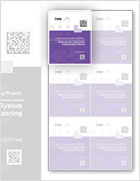
|
Introduction Download: Introduction of the Resource Guide Includes: |
|
|
|
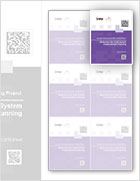
|
Précis Download: Précis of the Resource Guide The "Document Précis" section summarizes the main content of the document, in bullet format. Refer to the complete sections in the body of the document for cited references and additional detail. Direct links to additional detail are provided beside each major section title to assist the reader. |
|
|
|
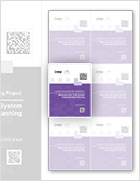
|
Section I - A Bar Code Primer for Leaders Download: Section I of the Resource Guide Section I provides a simplified explanation of Automated Identification and Data Capture (AIDC) and the GS1 global AIDC standard, the uses and limitations of selected bar code types within the GS1 standard, and how bar codes can be used within healthcare to safely verify medications and accurately document health care practices. |
|
|
|
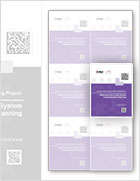
|
Section II - Building the Case for Automated Identification of Medications Download: Section II of the Resource Guide The Value of Bar Code Systems in Reducing Preventable Medication Errors Section II provides a rationale for utilizing automated medication verification at various stages of the medication-use process. It offers a basis for understanding the problem of preventable medication errors, human accuracy issues related to routine but important medication-use functions, and the principles of enhanced support for such functions. It also provides speaks to the important role of senior healthcare leaders in adopting strategies aligned with improved electronic and automated systems. |
|
|
|
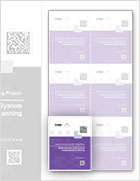
|
Section III - Implementation Considerations Download: Section III of the Resource Guide Successful Bar Code Implementation: Foundational and Specific Experiences Successful implementation of new or modified healthcare systems depends on a number of external and internal factors. External factors are often not within the facility's control, but internal factors can often be foreseen and addressed. This section reviews both high-level external influences and a number of internal planning considerations and also suggests a structure for the implementation process. |
|
|
|
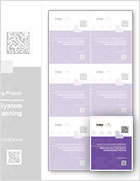
|
Section IV/V - References and Acknowledgements Download: Section IV/V of the Resource Guide Includes: |
|
|
|
|
Endorsements
|
|
|
Contact us to become a supporter of this initiative.
|
|
Become a Supporter
|
|||||
|
|
||||








































































